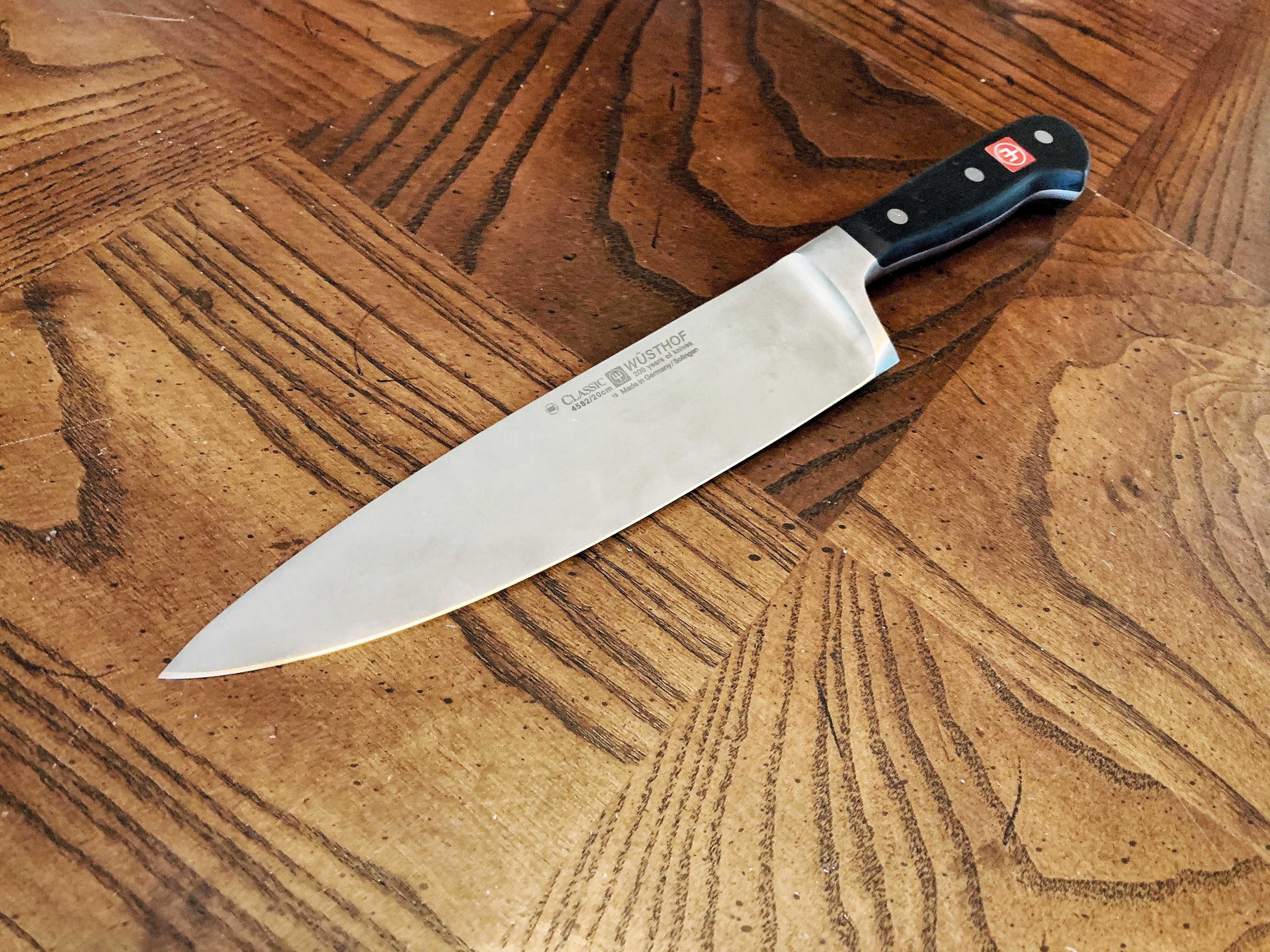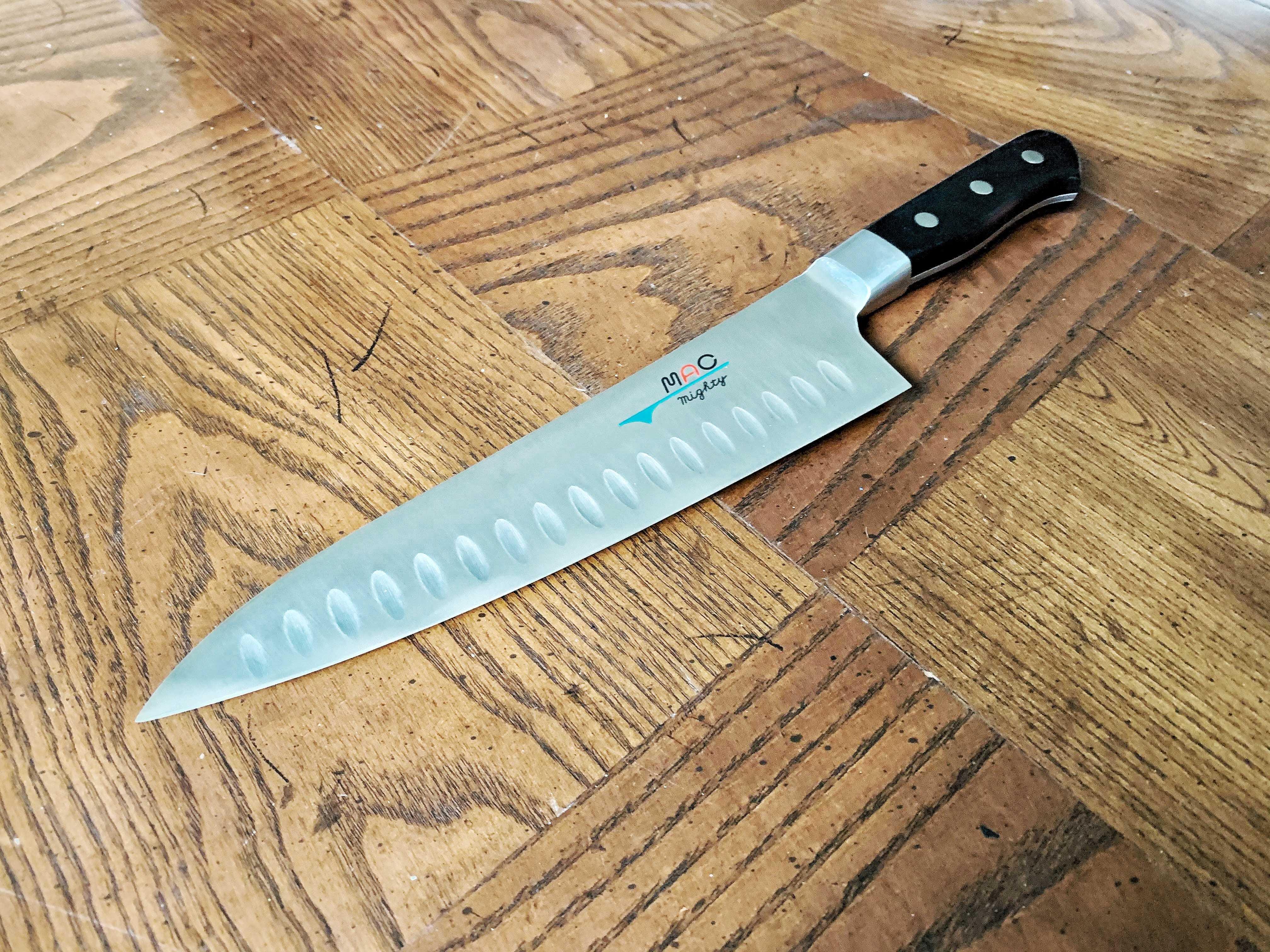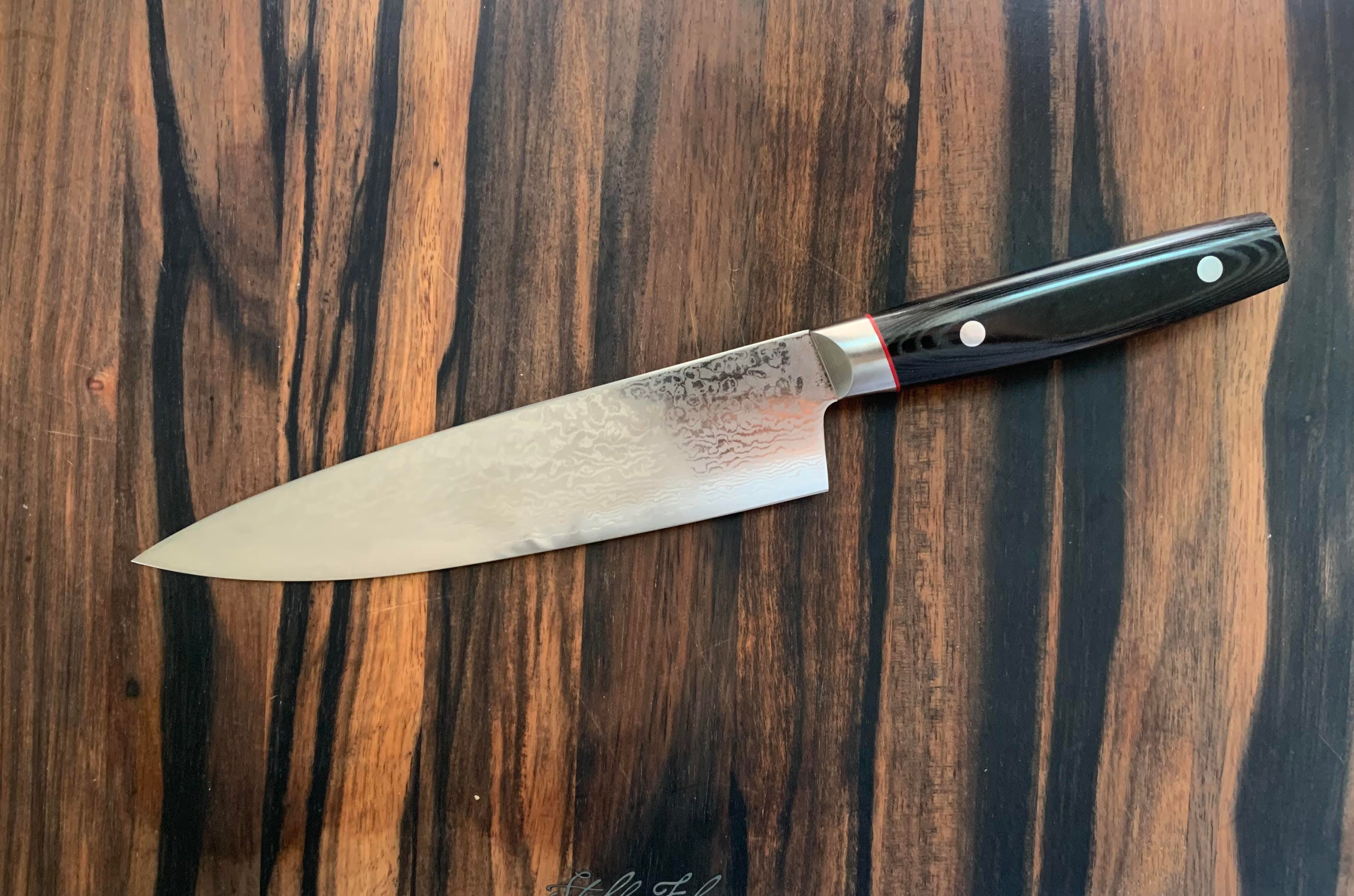
Western- and Japanese-style knives have key differences which them better for certain tasks. Here's why you may want one of each.
David Watsky/CNETIf you've ever shopped for a chef's knife, you've likely noticed they come in various styles and shapes. If you looked closely, you might have even noticed those styles and shapes are loosely associated with regions in which the knives are made. (I stress loosely because knife manufacturers worldwide now produce myriad styles, so the lines have been blurred.)
There are hundreds of types of knives from every corner of the cooking world, but foodies and industry folk often use the term "Western" or "Japanese" to delineate the two prevalent styles that most chef's knives fall into. You may be wondering what the difference is between a Western-style chef's knife and a Japanese blade. If they are different, is it helpful to have both in your kitchen arsenal? The answer to the second question isn't so black and white. First, we'll tackle the major differences between these types of knives, and how they are used so you can decide for yourself.
Read more: Best chef's knife for 2021
What is a Western- or German-style knife?
Unsurprisingly, given the name, this is likely the style of chef's knife you're most accustomed to if you group up in one of the Americas or Europe -- ya know, the West. Historically, Germany has done the bulk of high-end knife-making so you may have heard these referred to as "German-style" knives.
Western chef's knives generally have a lot of heft and a thicker blade with a gradual curve that lends itself to a rocking cut. Both the weight and blade shape make a German or Western blade ideal for those more laborious tasks like rough chopping, dicing, and hacking at harder, dense vegetables.

A true kitchen workhorse. This Western-style knife with its heavier weight and a curved blade is ideal for chopping.
David Priest/CNETWusthof and Zwilling J. A. Henckels (both German brands are two of the best-known Western knife-makers. Bob Kramer is an American bladesmith you may have heard about. The price for one of his custom blades is well into the thousands, and the waitlist many years long.
What is a Japanese-style knife?
If you hadn't guessed, this style of knife was popularized by Japanese chefs and sushi masters. Japanese knives are often lighter than their Western counterparts. They also typically have straight blades which are thinner and thus, sharper, making them ideal for precision cuts like slicing, fine mincing, julienne, trimming, and cutting softer foods (tomatoes, fish). Because a Japanese knife won't give you that natural rock, repetitive cuts like chopping and dicing are made more difficult.

This Mac Japanese-style knife was one of the best blades we've tested.
David Priest/CNETThe blade of a Japanese knife is generally softer than those of Western knives. This makes them dull faster and means they may require more care and sharpening. Some of the more popular Japanese knife manufacturers include Shun, Korin and Mac.
Read more: Best knife sharpeners for 2021
Here's why you might want both
Whether or not you spring for both a Western and Japanese knife to have in your arsenal depends largely on the type of cooking you do, and how precise you want to be with your cuts. I didn't know the key differences between these two knife styles until not long ago and was mostly getting along fine with just a standard Western blade. Having learned more about the two knives, including how and when to use them, they almost feel like different kitchen tools to me now. I've grown accustomed to having both.
For chopping carrots, garlic and celery for a recipe, it's the Western that I want. But for cutting softer vegetables, slicing fish or trimming a tenderloin I prefer the sharpness, dexterity and finesse that a Japanese-style knife affords.

Korin's 8-inch Nickel Damascus 8-inch Chef's Knife falls somewhere between a Western and Japanese knife.
David Watsky/CNETBecause the majority of knife work that an average home cook does is some form of chopping, a Western-style knife will likely give you more mileage. If you're new to cooking and haven't quite leveled up to recipes with loads of thin, precision cuts and you're trying to decide, I say go Western.
If you've got a reliable Western-style blade and you're considering adding a Japanese knife, there are options for quality blades for around $100 like the Mac Pro 8-inch -- but most go for $135 or more. Know that a good, sharp Japanese knife can do all the work of a slicing knife so you can save your pennies on one of those.
There are also knives that walk the line between Western and Japanese knives, like $198 Korin's Nickel Damascus (pictured above), which is an option if you're looking for the best of both.
"between" - Google News
October 10, 2021 at 09:00PM
https://ift.tt/3DpzpUc
The difference between Western and Japanese knives - CNET
"between" - Google News
https://ift.tt/2WkNqP8
https://ift.tt/2WkjZfX
Bagikan Berita Ini















0 Response to "The difference between Western and Japanese knives - CNET"
Post a Comment